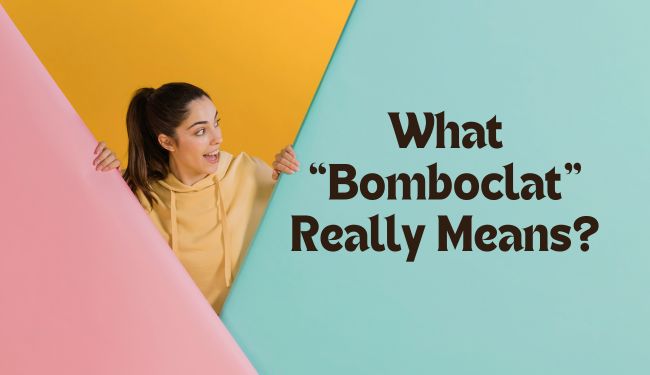“Bomboclat” stands as a potent Jamaican expletive. It often appears in music, memes, and casual social media chatter. Yet its origin reveals more than a simple catchphrase. This expression traces back to Jamaican Patois, where “bomboclat” (sometimes spelled “bumbaclaat”) merges references to body parts with words for cloth.
The term began as a taboo reference to sanitary items like toilet paper or menstrual rags. Over time, it transformed into a strong curse word that intensifies shock or anger.
In Jamaican culture, “bomboclat” holds a rank similar to the harshest English curses. Its use reflects raw emotion. That emotion might emerge from frustration, excitement, or surprise. Local slang in the Caribbean often pulls from historical or everyday experiences.
This term speaks to the region’s vibrant linguistic background, which blends African, European, and Indigenous influences. Jamaican Patois, with its own grammar and vocabulary, remains central to that cultural tapestry. Many Jamaican speakers grow up hearing “bomboclat” and learn to gauge its potency early on.
Some adopt this term in a playful way among close companions. That usage may appear in viral posts or comedic sketches. Yet the deeper meaning never disappears. Many treat “bomboclat” as taboo, especially in polite company or formal events.
Traditional Jamaican households often discourage youngsters from uttering such words. The cultural weight behind “bomboclat” lingers, even if it’s employed humorously on digital platforms. Misuse can spark conflict or misunderstanding, particularly among those who view it as offensive.
Social media influences public perception of Jamaican slang. In modern times, online platforms share local expressions around the globe. Popular hashtags and memes spread words like “bomboclat” beyond their home environment.
This rapid exchange of content means individuals encounter the term without grasping its full significance. Some might assume it equals a simple outburst, much like “wow” or “damn.”
In truth, “bomboclat” carries a stronger punch. It combines cultural subtext, linguistic heritage, and a tinge of taboo. Jamaican communities often react with alarm when outsiders toss around the word casually.
Cultural respect remains vital when exploring dialects or slang from other parts of the world. Jamaican Creole evolves in a landscape shaped by slavery, colonial power dynamics, and resistance.
Words gain layers of meaning in such contexts. A term that references bodily fluids and sanitary cloth stands out in that historical framework. Jamaicans typically reserve “bomboclat” for moments of intense emotion, not lighthearted banter. Some have reclaimed the word, yet the original force endures.
Foreign visitors or fans of Caribbean music might hear the phrase during live performances or recordings. An artist might unleash this expletive to heighten a crowd’s energy. The crowd may respond with cheers and laughter.
This behavior reflects the intimate way Jamaican music culture harnesses raw expression. It also highlights the fine line between performance and genuine offense. Discretion proves wise when deciding whether to repeat phrases from a language steeped in such history.
Ultimately, “bomboclat” represents more than a trendy interjection. Its background lies in private matters of hygiene, woven into a modern curse word. That evolution underscores how language can shift over time while retaining traces of its origins.
Even as trends bring once-local expressions to wider audiences, the cultural heft behind them deserves thoughtful handling. Jamaican Patois remains rich, vibrant, and layered. “Bomboclat” forms a vivid part of that linguistic legacy.
Also Read:

